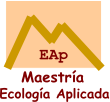|
Pautas para la elaboración de los manuscritos. Instructions to Authors Informação para os autores ------------------- |
|
Ecología Aplicada, 19(2), 2020 |
Presentado: 11/08/2019 |
|
ISSN 1726-2216 Versión impresa / ISSN 1993-9507 Versión electrónica. |
Aceptado: 05/08/2020 |
|
Depósito legal 2002-5474 |
|
|
© Departamento Académico de Biología, Universidad Nacional Agraria La Molina, Lima – Perú. |
|
CRIANZA DE Eisenia foetida (LOMBRIZ ROJA) EN DIFERENTES SUSTRATOS DE DESARROLLO BIOLÓGICO
BREEDING OF Eisenia foetida (RED WORM) IN DIFFERENT SUBSTRATES OF BIOLOGICAL DEVELOPMENT
Angel Canales Gutiérrez[1], Brayan Juan Solís Ramos[2], Rosmery Judith Panca Castañeda[3] y Bessy Laleska Quispe Cáceres[4]
Resumen
El aprovechamiento de residuos orgánicos, es una alternativa ambiental viable, siendo las lombrices organismos que permiten un proceso rápido de descomposición. La investigación de crianza de lombrices rojas en diferentes sustratos de desarrollo biológico, se llevó a cabo durante junio y julio del 2019. Los objetivos fueron: a) Determinar la influencia del tipo de sustrato (tipo de tratamiento) en el incremento de cocones y biomasa de la lombriz roja, b) Estimar el grado de asociación entre número de lombrices, número de cocones, longitud y biomasa en diferentes tratamientos de sustrato. La metodología consistió en implementar tres tipos de sustrato y uno de control, considerando heces de animales y restos de frutas. La evaluación de la temperatura, humedad y pH fue cada dos días, y la del número de lombrices, cocones, longitud y biomasa fue cada 12 días. Los resultados fueron: el número de cocones de lombriz roja de tierra, se incrementó hasta seis cocones o huevos en 36 días (promedio 4.33 cocones/lombriz), siendo el tratamiento con estiércol de animales y cáscaras de fruta, donde hubo un mayor número de cocones, en relación a los otros tratamientos. El mayor grado de asociación se registró entre longitud (mm) y la biomasa (g) de lombrices, con un valor de r = 0.82.
Palabras clave: biomasa, crianza, heces, lombriz, residuos orgánicos, reproducción y sustrato.
Abstract
The use of organic waste is a viable environmental alternative, the sources being an organism that allows a rapid decomposition process. The research of rearing red worms in different substrates of biological development, was carried out during June and July 2019. The objectives were: a) To determine the influence of the type of substrate (type of treatment) on the increase of stumps and biomass of the red worm, b) Estimate the degree of association between number of worms, number of stumps, length and biomass in different substrate treatments. The methodology consists of implementing three types of substrate and one of control, analyzing animal faeces and fruit remains. Assessment of temperature, humidity and pH was performed every two days, and the number of earthworms, cocoons, length and biomass every 12 days. Results were as follows: the number of red earthworm cocoon increased to six cocoons or eggs in 36 days (average 4.33 cocoons/earthworm), with the treatment with animal manure and fruit peels, as the one with higher number of cocoons, in relation to the other treatments. The highest degree of association was recorded between length (mm) and the biomass (g) of earthworms, with a value of r = 0.82.
Key words: biomass, breeding, faeces, worm, organic waste, reproduction and substrate.
[1] Facultad de Ciencias Biológicas / Universidad Nacional del Altiplano de Puno / Perú. acanales@unap.edu.pe. https://orcid.org/0000-0002-3096-1705.
[2] Instituto de investigación CHARLES DARWIN / Facultad de Ciencias / Universidad Nacional del Altiplano de Puno / Perú. 72197727@pronabec.edu.pe.
[3] Instituto de investigación CHARLES DARWIN / Facultad de Ciencias / Universidad Nacional del Altiplano de Puno / Perú. rosmeryjudith15@gmail.com.
[4] Instituto de investigación CHARLES DARWIN / Facultad de Ciencias / Universidad Nacional del Altiplano de Puno / Perú. bessylaleska@gmail.com.







